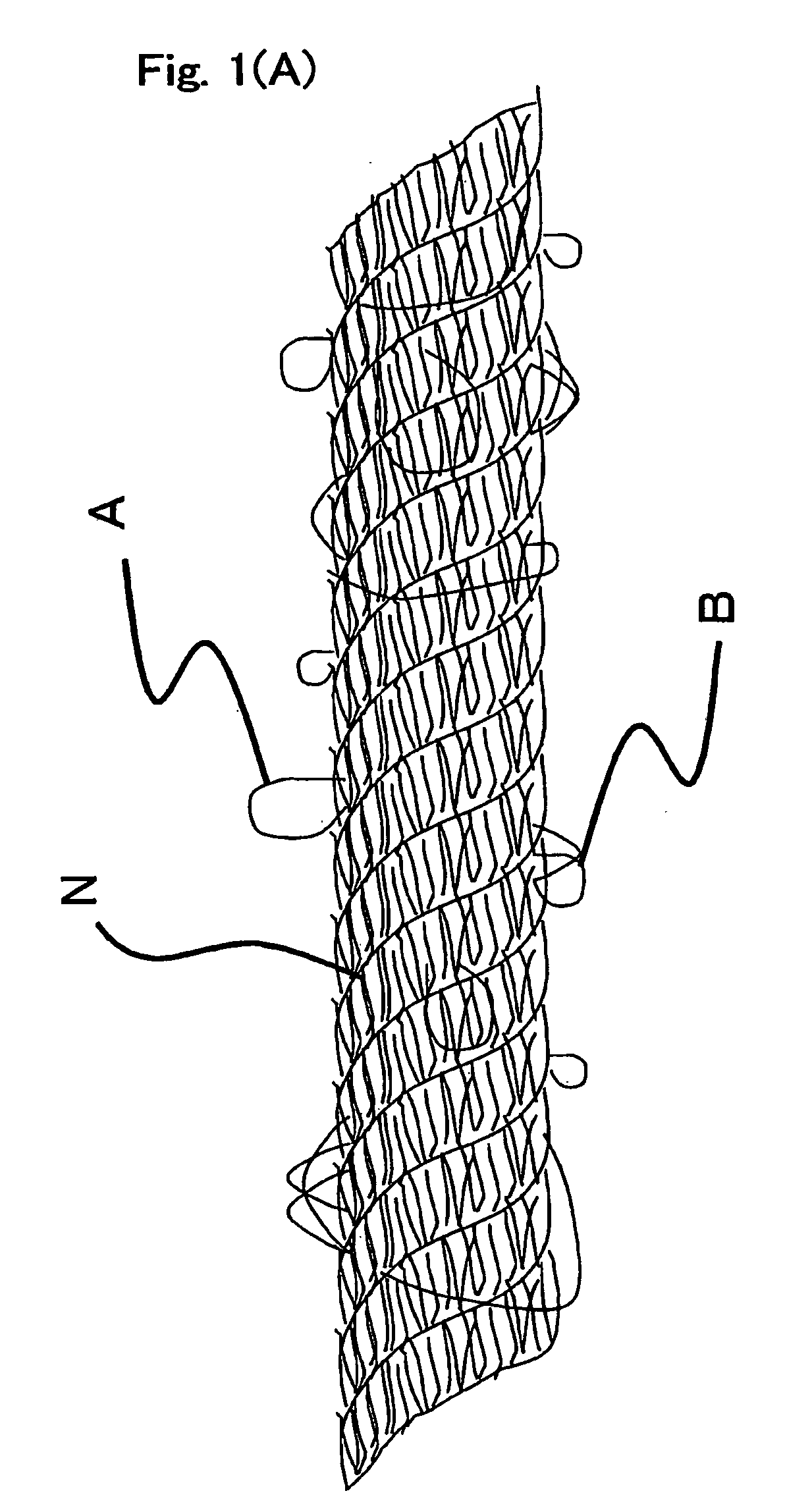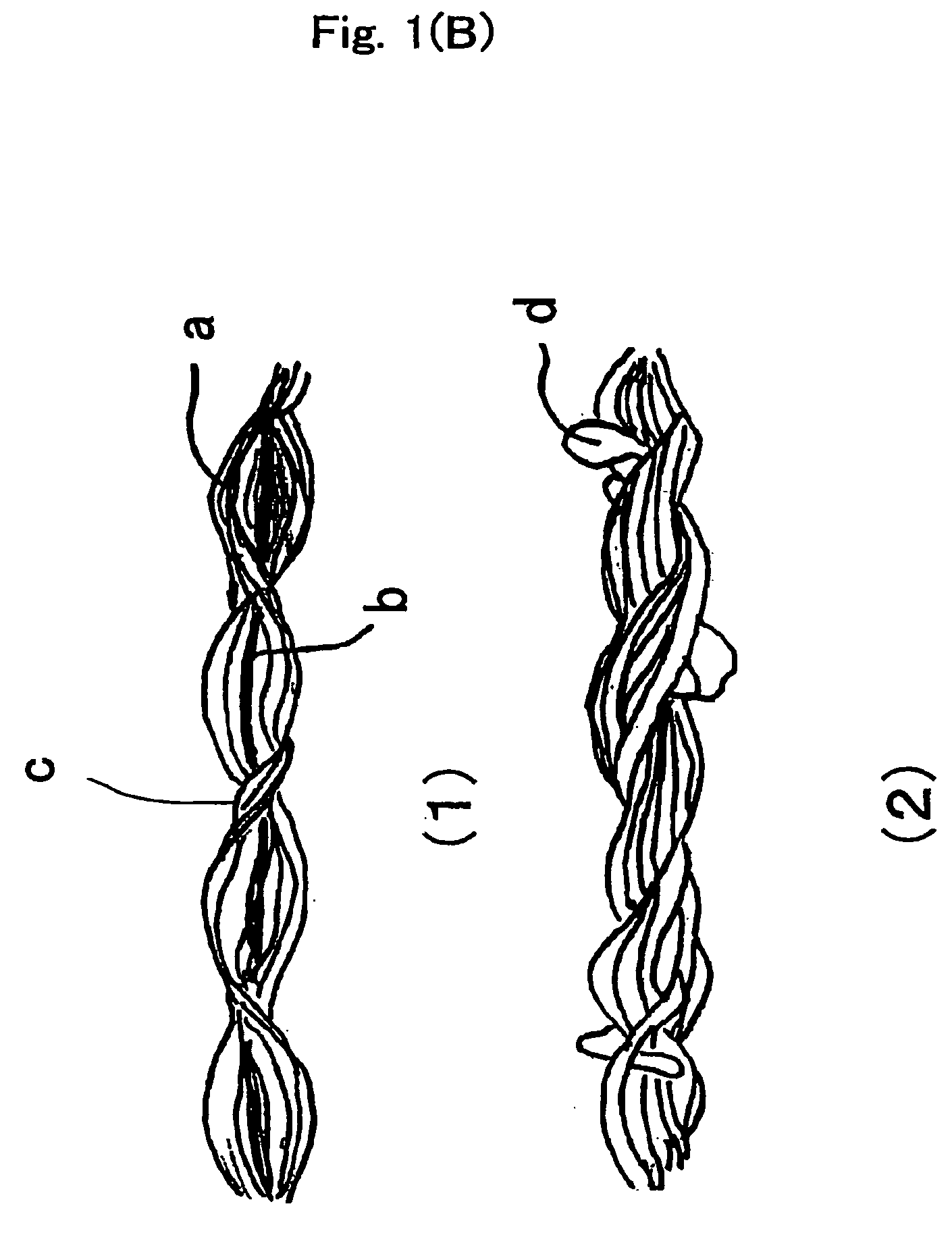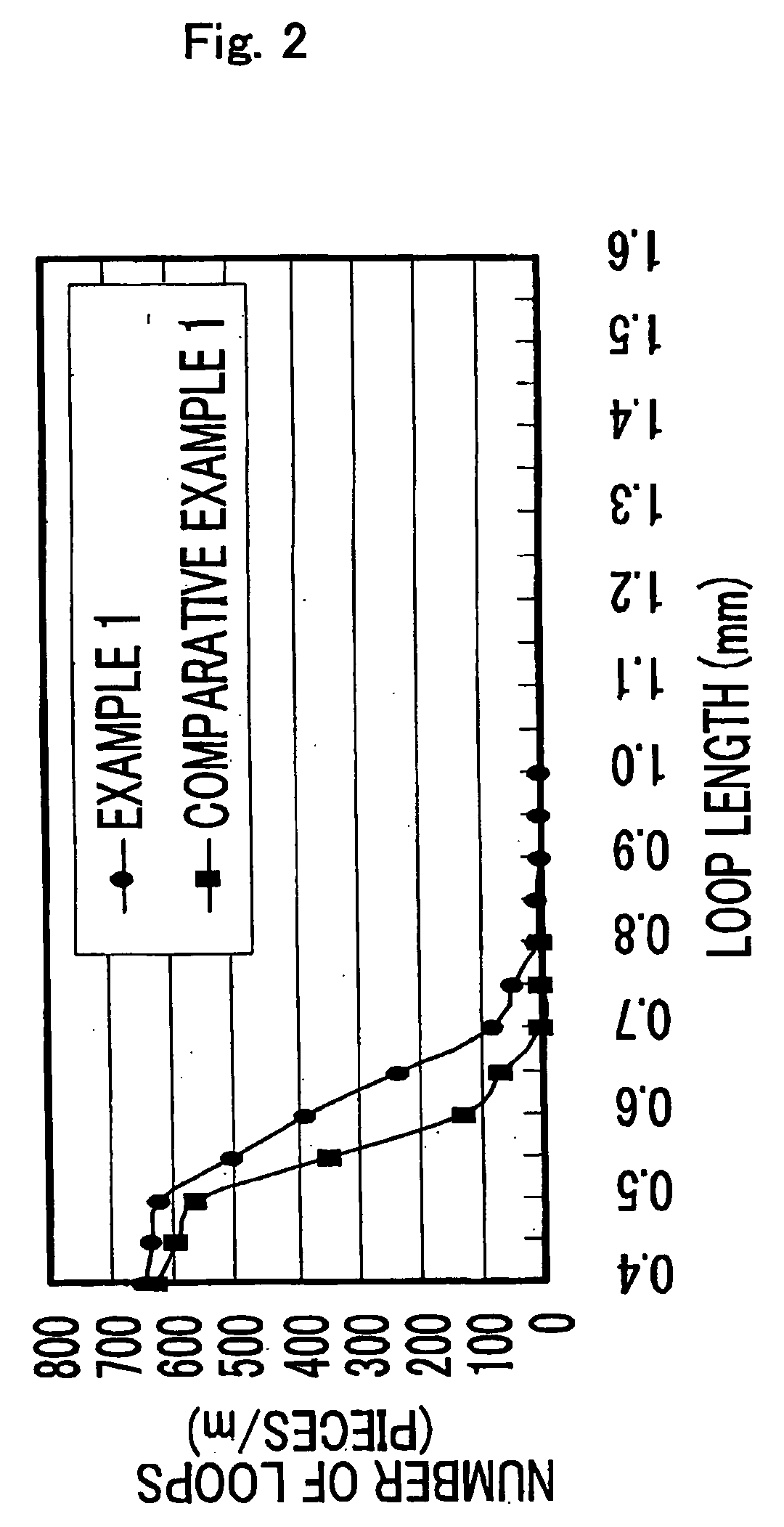Sewing thread and process for producing the same
a technology of thread and needle, applied in the field of sewing thread, can solve the problems of low process-passage efficiency, reduced mightiness, difficult loop to contribute to yarn strength, etc., and achieve the effects of high speed sewability, reduced friction resistance between thread and needle, and high strength
- Summary
- Abstract
- Description
- Claims
- Application Information
AI Technical Summary
Benefits of technology
Problems solved by technology
Method used
Image
Examples
example 1
[0092] Two high-mightiness polyester multifilament yarns with 6.2 cN / dtex (56 dtex−18 filaments) were entangled and combined by fluid at a core-yarn overfeed rate of 3% and at a sheath-yarn overfeed rate of 8% using a nozzle for chemical synthetic yarns shown in FIG. 3(B) so as to obtain a sheath-core structure yarn with a yarn-length difference between the core yarn and the sheath yarn of 5% (the nozzle pressure: 0.4 MPa). The sheath-core structure yarn was under-twisted in the s direction at 1010 T / m with a down twister, and then, the aligned two sheath-core structure yarns were upper-twisted in the Z direction at 758 T / m with the down twister. Then, after heat treatment at a temperature of 180° C., the sewing thread was dyed in a cheese state, and re-reeled on a bobbin for a sewing thread while oil being applied thereon. The characteristics of this sewing thread having loop distribution shown in EXAMPLE 1 of FIG. 2 are as follows:
[0093] The loop length: the number of loops of 0....
example 2
[0097] The sewing thread was produced in the same way as in EXAMPLE 1 except changes in the core yarn overfeed rate to 3%, in the sheath yarn overfeed rate to 13%, and in the sheath-core structure yarn-length difference between the core yarn and the sheath yarn to 10%. The characteristics of this sewing thread are as follows:
[0098] The loop length: the number of loops of 0.7 mm to less than 1.2 mm: 142 pieces / m
[0099] The loop length: the number of loops of 1.2 mm or more: 0 piece / m
[0100] The mightiness: 997.4 cN (the strength: 4.26 cN / dtex)
[0101] When this sewing thread was evaluated as a sewing machine thread in-the same way as in EXAMPLE 1, the high-speed sewability was increased further than in EXAMPLE 1 up to 4500 needles / min and the back sewability was reduced to 1000 needles / min, so that the sewability was in a practically favorable range.
example 3
[0102] The sewing thread was produced in the same way as in EXAMPLE 2 except that a multifilament yarn used for the sheath-core structure yarn is 44 dtex-18 filaments. The characteristics of this sewing thread are as follows:
[0103] The loop length: the number of loops of 0.7 mm to less than 1.2 mm: 195 pieces / m
[0104] The loop length: the number of loops of 1.2 mm or more: 7 pieces / m
[0105] The mightiness: 816.4 cN (the strength: 4.49 cN / dtex) When this sewing thread was evaluated, in the same manner as in EXAMPLE 2, the high-speed sewability was increased further than in EXAMPLE up to 4500 needles / min and although the back sewability was reduced, but it was 1000 needles / min, so that the sewability was excellent.
PUM
| Property | Measurement | Unit |
|---|---|---|
| length | aaaaa | aaaaa |
| lengths | aaaaa | aaaaa |
| running speed | aaaaa | aaaaa |
Abstract
Description
Claims
Application Information
 Login to View More
Login to View More - R&D
- Intellectual Property
- Life Sciences
- Materials
- Tech Scout
- Unparalleled Data Quality
- Higher Quality Content
- 60% Fewer Hallucinations
Browse by: Latest US Patents, China's latest patents, Technical Efficacy Thesaurus, Application Domain, Technology Topic, Popular Technical Reports.
© 2025 PatSnap. All rights reserved.Legal|Privacy policy|Modern Slavery Act Transparency Statement|Sitemap|About US| Contact US: help@patsnap.com



